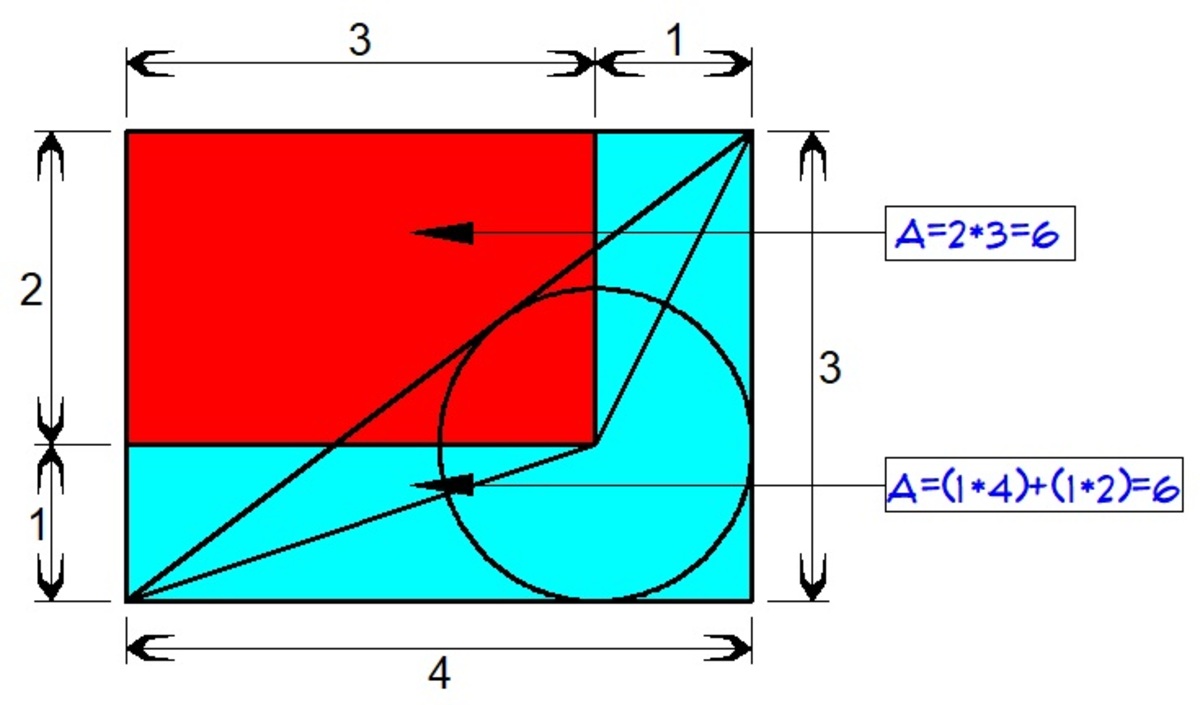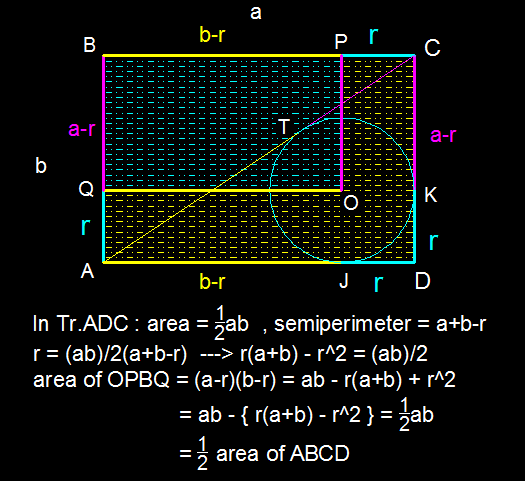Circle in a rectangle
The large rectangle below is divided into two congruent triangles by one of its diagonals. We inscribe a circle into one of the triangles, and then drop perpendiculars from the center of the circle to two sides of the large rectangle, as shown in the diagram.
Which has a larger area, the resulting blue rectangle or the remaining yellow hexagon?
This section requires Javascript.
You are seeing this because something didn't load right. We suggest you, (a) try
refreshing the page, (b) enabling javascript if it is disabled on your browser and,
finally, (c)
loading the
non-javascript version of this page
. We're sorry about the hassle.
5 solutions
And what about the area of the other part of the blue region and the other part of the yellow region? Regards, David
Log in to reply
Oh, I see. You have noted that the 2 areas of the congruent triangles
If we set the base of the rectangle to be a and the height as 1 , from Heron's formula, the radius of the circle will be R = 1 + a + 1 + a 2 a
The area of the rectangle will be A □ = ( 1 − R ) ( a − R )
And the yellow area will become A h e x = a R + R − R 2
Their difference A = A □ − A h e x = a − 2 a R − 2 R + 2 R 2
A = ( 1 + a + 1 + a 2 ) 2 1 ( a ( 1 + a + 1 + a 2 ) 2 − 2 a 2 ( 1 + a + 1 + a 2 ) − 2 a ( 1 + a + 1 + a 2 ) + 2 a 2 ) = 0
Consider a
3
×
4
rectangle.

Measuring diagonal length by two methods and equating them also provides the solution.
Diagonal length = sum of lengths of two tangents = (a-r) + (b-r), where a and b are side lengths of rectangle and r is radius.
Diagonal length is also √(a^2+b^2).
Squaring and equating the two gives,.
(a-r)^2 + (b-r)^2 + 2(a-r)(b-r) = a^2 + b^2.
2(a-r)(b-r) = {a^2-(a-r)^2} + {b^2-(b-r)^2}.
= r(2a-r) + r(2b-r) = 2r(a+b-r).
Or, (a - r)(b - r) = r(a + b - r).
But LHS is equal to Blue area and RHS is equal to Yellow area.
So, Blue area = Yellow area

We drop perpendiculars from O the diagonal. Then ∠ A F E = ∠ O F G and ∠ A E F = ∠ F G O = 9 0 ° . Since O G is a radius of the circle, and A E = O X = O G , the A E F and F G O triangles are coincident. Similarly the O G H , I H C triangles are coincident too. So [ O I D E ] = [ A C D ] = 2 1 [ A B C D ] .
So the two area is equal.